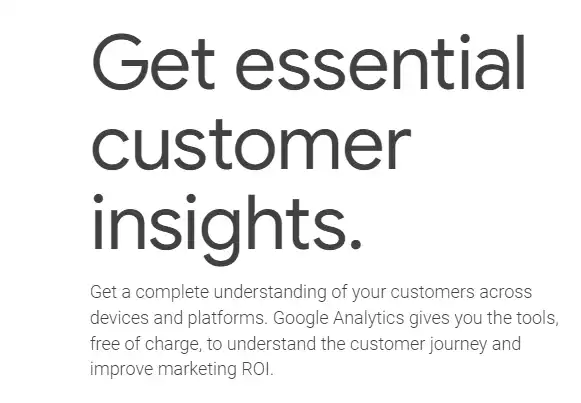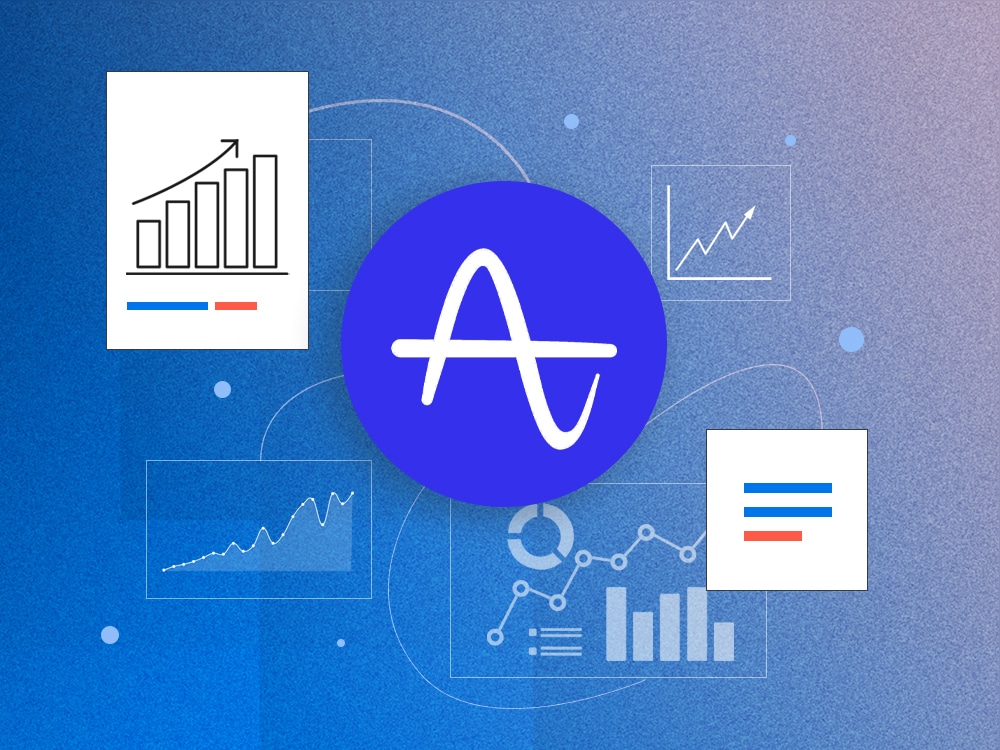Ready to move on from Amplitude, or want to explore other options? Read this blog post to get a better understanding of vendors that offer similar solutions to Amplitude, their target use cases, key features, and customer ratings.
| # | Company | G2 score | Description |
| 1 | Kubit | 4.6 | Warehouse-native product analytics for optimizing digital products while ensuring data security, compliance, and scalability |
| 2 | Mixpanel | 4.6 | Product analytics for understanding customer behavior across devices to improve user experience |
| 3 | Heap | 4.4 | Digital insights for improving the customer journey and testing new features and experiences |
| 4 | Pendo | 4.4 | Product experience platform that helps teams deliver better software experiences and increase product adoption |
| 5 | Netspring | 4.3 | Analytics for insight on digital product usage, customer journey, and business intelligence |
What is Amplitude?
Amplitude is a product analytics platform that helps businesses build better digital products by tracking and understanding user behavior. Amplitude analytics help teams answer questions about what happened and why. These insights enable informed decision-making to drive growth.
Businesses use Amplitude to:
- Analyze active users
- Understand customer value
- Accelerate monetization
- Increase user engagement and retention
- Improve the customer journey
- Maximize user adoption
Drawbacks to using Amplitude
Choosing the right analytics platform for your use case is critical for success. Many analytics vendors are on the market, and each has its own strengths (and drawbacks), depending on the use case it’s implemented for. Some drawbacks to using Amplitude include:
It’s not warehouse-native. With Amplitude, you must move or replicate your data for analysis, so your data will not represent a 100% complete, up-to-date picture.
Higher cost of ownership. Amplitude requires additional engineering resources to transform data into a certain format, include historical data, expunge data, or add new schemas to it.
Limited permissions. While other product analytics vendors offer custom, role-based permissions, Amplitude offers only four out-of-the-box roles.
Data security. With Amplitude, your data must leave the walls of your CDW to be analyzed, potentially causing security or compliance risks.
Data analysis. Amplitude offers common analysis types but does not include capabilities such as and/or with filters, creating filters on the fly, out-of-the-box sampling, access to SQL behind each query, or creating histograms on the fly.
Top 9 alternatives to Amplitude, by use case
#1 Kubit

Use case: Warehouse-native analytics for optimizing digital products while ensuring data security, compliance, and scalability.
Kubit analytics platform helps companies gain valuable customer insights without moving their data into silos. This warehouse-native approach lowers the cost of ownership, frees up engineering resources, and delivers more accurate and complete self-service insights.
Key features:
- User engagement: Find out which user behaviors lead to higher lifetime value and how to retain and grow your user base.
- Feature engagement: See which product bets drive the highest engagement and create power users within your product.
- Conversion analysis: Learn how users convert through critical funnels within your product and how to resolve areas that lead to drop off.
- Consumption patterns: Understand which product bets and content to play up and which to sunset.
G2 gives Kubit 4.6/5 stars. Read reviews of Kubit on G2.
#2 Mixpanel

Use case: Analytics for learning how and why people engage, convert, and retain (across devices) to improve their user experience.
Mixpanel is a digital analytics platform that helps companies measure what matters, make decisions fast, and build better products through data with self-serve product analytics solutions.
Key features:
- Product analytics: Track user behavior, KPIs, and core metrics with trends, retention, and flows.
- Collaborative boards: Build analysis in collaborative boards that can include reports, text, videos, and GIFs.
- Alerts: Get automated notifications when there are anomalies in metrics or when they fall outside of an expected range.
- Filtered data views: Hide and filter data on a per-team basis to protect data privacy and reduce noise.
G2 gives Mixpanel 4.6/5 stars. Read reviews of Mixpanel on G2.
#3 Heap

Use case: Analytics for improving the customer journey and testing new features and experiences.
Heap is a digital insights platform that helps companies understand their customers’ digital journeys so they can quickly improve conversion, retention, and customer delight.
Key features:
- Session replay: Get insights about user behavior by replaying their session to understand where they experience friction.
- Heatmaps: A visualization of a user’s behavior on the page, including what they click on, how far they scroll, and where they focus their cursor.
- Autocapture: Capture all the data you need automatically, including every view, click, swipe, and form fill, for web and mobile.
- Segments: Create user cohorts based on real actions taken on your site or app to understand how different users navigate your digital experience.
G2 gives Heap 4.4/5 stars. Read reviews of Heap on G2.
#4 Pendo

Use case: Product analytics, in-app guides, session replay, and user feedback.
Pendo is a product experience platform that helps teams deliver better software experiences and increase product adoption through onboarding users, tracking adoption analytics, monitoring usage patterns, and measuring churn rates.
Key features:
- Product analytics: Collect app and user data and learn from the past to make informed decisions that improve product adoption.
- Session replay: Watch video playbacks of user sessions to understand why users do what they do.
- In-app guides: Deliver personalized guidance to customers directly inside your app.
- Product-led growth: Drive better customer retention, conversions, and engagement with less time and expertise.
G2 gives Pendo 4.4/5 stars. Read reviews of Pendo on G2.
#5 Userpilot
Use case: Analytics for increasing product adoption, improving onboarding, and supporting product-led growth.
Userpilot is an all-in-one platform for Product & UX teams. It combines product analytics, in-app engagement, and in-app surveys to help you increase product adoption through powerful in-app experiences, actionable product analytics, and user feedback.
Key features:
- Feature tags and heatmaps: Tag certain UI elements and monitor how users interact with them; visualize data through color-coded heatmaps.
- Custom event tracking: Track relevant milestones in a customer journey that reflect desirable user behavior, like downloading a Chrome extension, and then monitor how many users behave in that manner.
- Analytics dashboards: Track product usage metrics such as the number of active users, sessions, average session duration, and feature adoption rate from a single view.
- Funnel analysis: Track how users progress through different user funnels, enabling you to discover friction points in the user journey and optimize them to improve the user experience.
G2 gives Userpilot 4.6/5 stars. Read reviews of Userpilot on G2.
#6 Smartlook
Use case: Analytics for websites, iOS/Android apps, and various frameworks that answer the “why” behind user actions.
Smartlook gathers brands’ app data together on one central dashboard to provide clear, data-driven decision-making for product managers, marketers, UX designers, and developers to reduce churn rates, boost conversions, identify and fix bugs, and improve UX.
Key features:
- Session recordings: Evaluating user recordings can reveal issues with your app or website.
- Events: Find out how often users perform certain actions that are important to you.
- Funnels: Find out where and why your users are dropping off, so you can improve.
- Heatmaps: Get an overview of where your users click and how far they scroll.
G2 gives Smartlook 4.6/5.0 stars. Read reviews of Smartlook on G2.
#7 Google Analytics

Use case: Freemium analytics service for gaining insight into website and app behavior, user experience, and marketing efforts.
Google Analytics collects website and app visitor data to help businesses determine top sources of user traffic, gauge the success of their marketing campaigns, track goal completion, discover patterns and trends in user engagement, and obtain visitor demographics.
Key features:
- Built-in automation: Get fast answers to questions about your Google Analytics data, predict user behavior, and tap into powerful modeling capabilities.
- Reporting: Dive deeper into the ways customers interact with your sites and apps with real-time reporting, acquisition reports, engagement reports, and monetization reports.
- Advertising workspace: Understand the ROI of your media spend across all channels to make informed decisions about budget allocation and evaluate attribution models.
- Explorations: Run deeper, custom analysis of your data without the limitations of pre-defined reports, and share insights with other users.
G2 gives Google Analytics 4.5/5 stars. Read reviews of Google Analytics on G2.
#8 Netspring
Use case: Analytics for insight on digital product usage, customer journey, and business intelligence.
Netspring is a product and customer analytics platform that brings the modeling flexibility and exploratory power of business intelligence to self-service product analytics, working directly off of any cloud data warehouse.
Key features:
- Self-service: Self-serve answers questions from a rich library of product analytics reports, with the ability to pivot back and forth between any report and ad hoc visual data exploration.
- Warehouse-native: Combine product instrumentation with any business data in your data warehouse for context-rich analysis.
- SQL option: Avoid writing and maintaining complex SQL for funnel/path-type queries, but have the option of leveraging SQL for specialized analysis.
- Product and customer analytics: Solutions for behavioral analytics, marketing analytics, operational analytics, customer 360, product 360, and SaaS PLG.
G2 gives Netspring 4.3/5 stars. Read reviews of Netspring on G2.
#9 Posthog
Use case: Combining product analytics, session replay, feature flags, A/B testing, and user surveys into an all-in-one, open-source platform.
Posthog enables software teams to capture events, perform analytics, record user sessions, conduct experiments, and deploy new features, all in one platform, helping engineers to design better, build better, develop better, and scale better.
Key features:
- Product analytics: Funnels, user paths, retention analysis, custom trends, and dynamic user cohorts. Also supports SQL insights for power users.
- A/B tests: Up to nine test variations, as well as primary and secondary metrics, can be used. Test duration, sample size, and statistical significance can be automatically calculated.
- Session replays: Includes timelines, console logs, network activity, and 90-day data retention.
- Surveys: Target surveys by event or person properties. Templates for net promoter score, product-market fit surveys, and more.
G2 gives Posthog 4.4/5 stars. Read reviews of Posthog on G2.
Is Kubit right for you?
Customers typically choose Kubit product analytics over Amplitude for four reasons:
- Warehouse-native architecture
- Lower total cost of ownership
- Data security and compliance
- Expansive analysis capabilities
If you’re ready to empower your teams with warehouse-native, self-service product analytics, without having to move your data, contact us.




